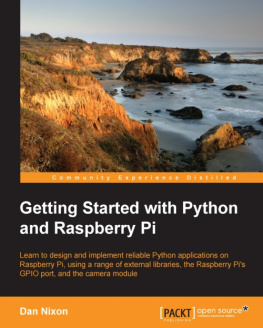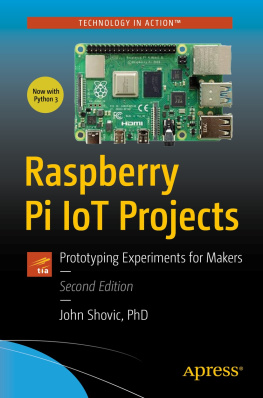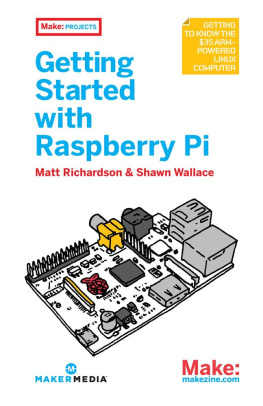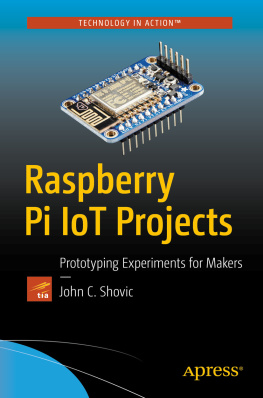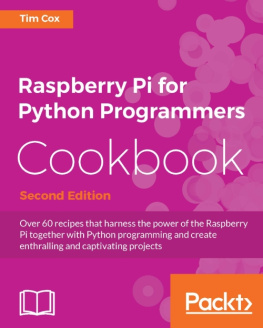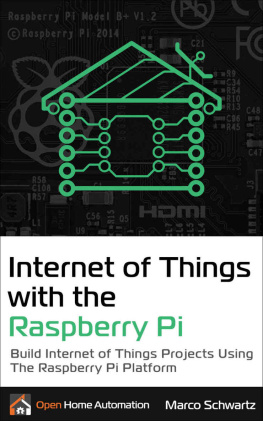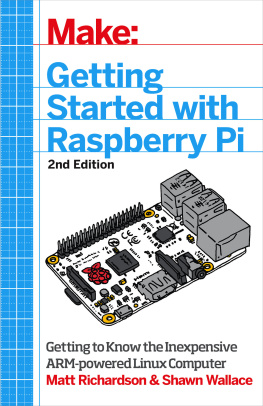Did you know that Packt offers eBook versions of every book published, with PDF and ePub files available? You can upgrade to the eBook version at www.packt.com and as a print book customer, you are entitled to a discount on the eBook copy. Get in touch with us at customercare@packtpub.com for more details.
At www.packt.com , you can also read a collection of free technical articles, sign up for a range of free newsletters, and receive exclusive discounts and offers on Packt books and eBooks.
About the authors
Tim Cox works as a software engineer and is passionate about programming. He holds a bachelor's degree in electronics and electrical engineering and has a rich career in developing embedded software for a range of industries. To support the vision behind the Raspberry Pi and to encourage a new generation of engineers, Tim co-founded the MagPi magazine (the official magazine for the Raspberry Pi). He also produces electronic kits through his site PiHardware.
Dr. Steven Lawrence Fernandes holds a bachelor's degree in electronics and communication engineering, a master's degree in microelectronics, and a Ph.D. in computer vision and machine learning. His Ph.D work "Match composite sketch with drone images" has received patent notification (Patent Application Number: 2983/CHE/2015). has post the doctoral research experience working in deep learning at the University of Alabama at Birmingham, USA. He received the prestigious US award from the Society for Design and Process Science for his outstanding service contributions in 2017 and Young Scientist Award by Vision Group on Science and Technology in 2014. He has also received a research grant from the Institution of Engineers.
Sai Yamanoor is an embedded systems engineer working for a private startup school in the San Francisco Bay Area, where he builds devices that help students achieve their full potential. He completed his undergraduate work in mechatronics engineering from Sri Krishna College of Engineering and Technology, Coimbatore, India and his graduate studies in mechanical engineering at Carnegie Mellon University, Pittsburgh PA. His interests, deeply rooted in DIY and open software and hardware cultures, include developing gadgets and apps that improve the quality of life, Internet of Things, crowdfunding, education, and new technologies. In his spare time, he plays with various devices and architectures, such as the Raspberry Pi, Arduino, Galileo, Android devices and others. Sai has earlier published a book titled Raspberry Pi Mechatronics Projects.
Srihari Yamanoor is a mechanical engineer, working on medical devices, sustainability, and robotics in the San Francisco Bay Area. He completed his undergraduate studies in mechanical engineering from PSG College of Technology, Coimbatore, India and graduate studies in mechanical engineering at Stanford University. He is certified in SolidWorks, simulation, sustainable design, PDM as well as in quality and reliability engineering and auditing. His has a wide range of interests, from DIY, crowdfunding, AI, travelling, photography to gardening and ecology.
Prof. Diwakar Vaish is a robotics scientist and the inventor of Manav, India's first indigenous humanoid robot. He has invented the world's first mind-controlled wheelchair, brain cloning, and the world's cheapest ventilator. He has also been a guest lecturer at over 13 IITs and various other institutions. He is the founder of A-SET Robotics, a leading robotics research company based in New Delhi.
Packt is searching for authors like you
If you're interested in becoming an author for Packt, please visit authors.packtpub.com and apply today. We have worked with thousands of developers and tech professionals, just like you, to help them share their insight with the global tech community. You can make a general application, apply for a specific hot topic that we are recruiting an author for, or submit your own idea.
What this book covers
, Getting Started with a Raspberry Pi 3 Computer, introduces the Raspberry Pi and explores the various ways in which it can be set up and used.
, Dividing Text Data and Building Text Classifiers, guides us to build a text classifier; it can classify text using the bag-of-words model.
, Using Python for Automation and Productivity, explains how to use graphical user interfaces to create your own applications and utilities.
, Predicting Sentiments in Words, explains how Naive Bayes classifiers and logistic regression classifiers are constructed to analyze the sentiment in words
, Detecting Edges and Contours in Images, describes in detail how images are loaded, displayed, and saved. It provides detailed implementations of erosion and dilation, image segmentation, histogram equalization, edge detection, detecting corners in images, and more.


